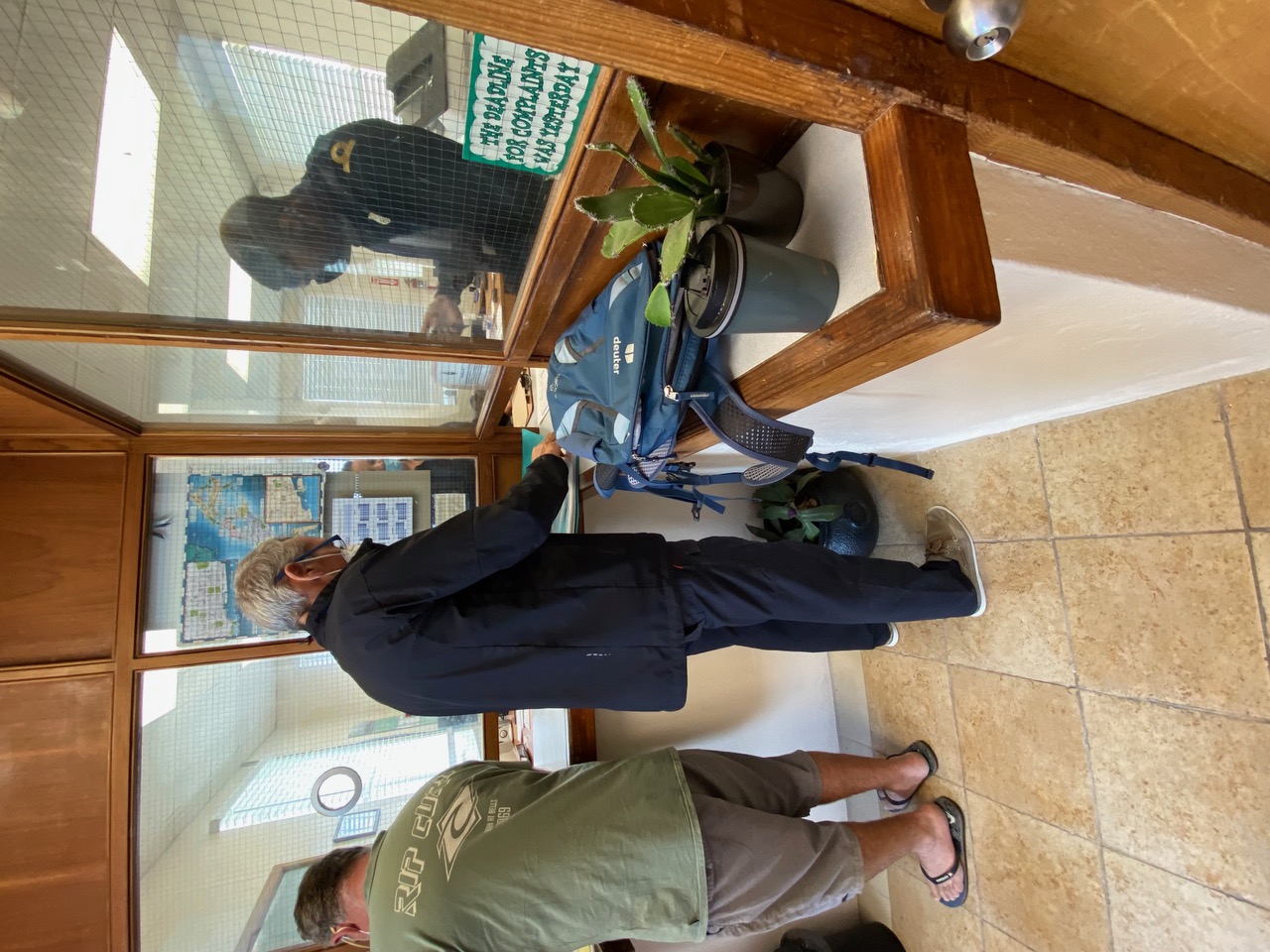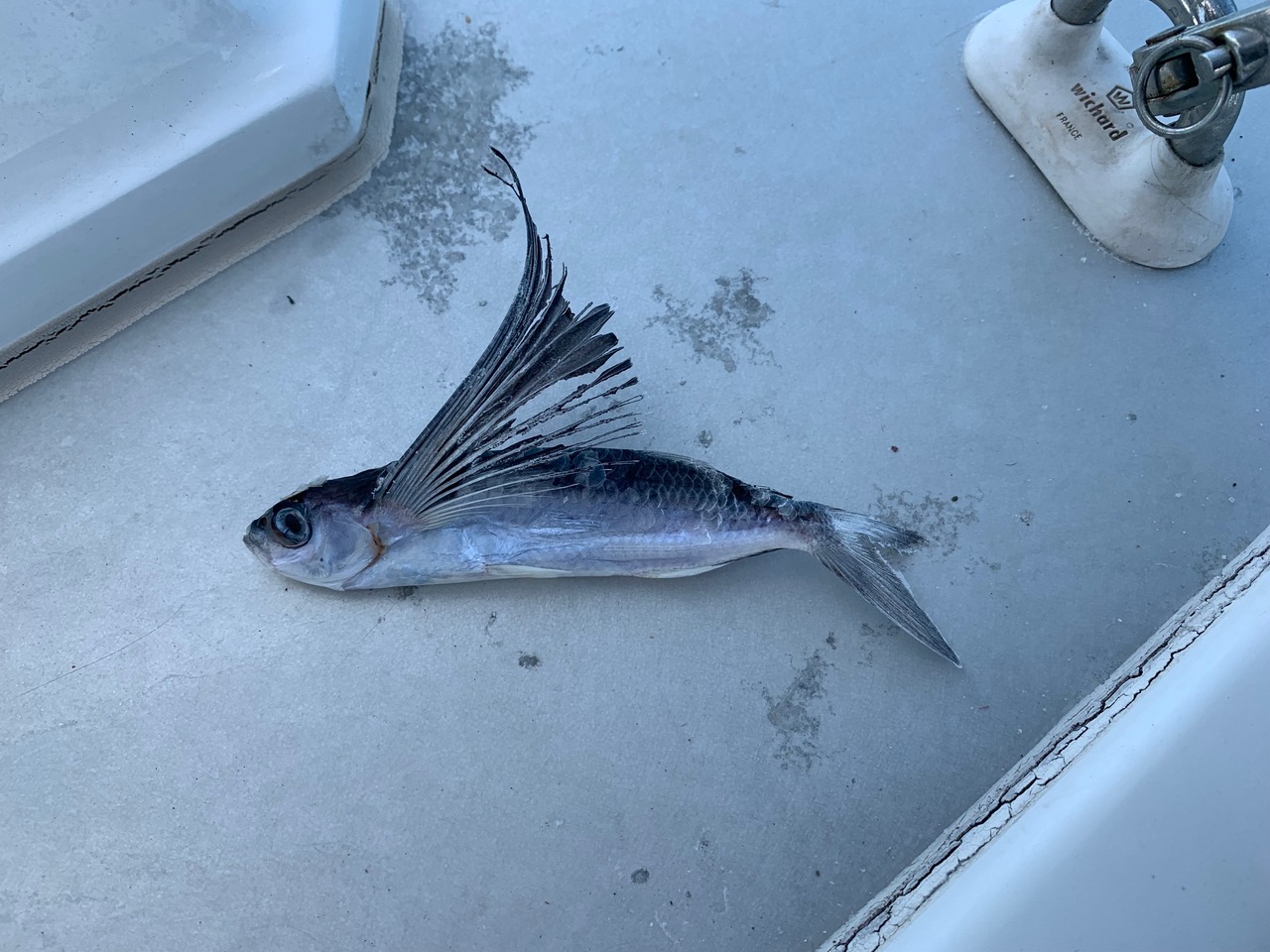Arrival in St George's Harbour, Bermuda

Stravaig'n the Blue
Sat 30 Apr 2022 20:08
Position: 32:22.8 N 064:40.3 W (Convict Bay anchorage, St George’s Harbour, Bermuda) Position timestamp: Saturday 30 April 2022 18:20 (UTC-3 - Bermuda local time) We have arrived! As requested by email before we set off, I checked in with Bermuda Radio when 15 miles off, at noon local time. Linda sighted land about an hour later and in time-honoured fashion called "Land Ahoy!”. We passed Gibbs Hill Light at 2pm. The 12 miles up the southeast coast of Bermuda to St David’s Light was speedy in the brisk northwesterly, helped by the flat water on the lee side of Hamilton Island, the main island of Bermuda. I called Bermuda Radio again at St David’s Light and was given permission to enter St George’s Harbour via Town Cut. A sailing vessel that was about an hour ahead of us had had to hang about for half an hour when a US warship was given priority for its departure. Once through Town Cut, Bermuda radio liaised with Bermuda Customs to confirm that the Customs dock at Ordnance Island was clear and we were tied up at the dock at 16:45. The camera angle is making Stravaig look much slimmer than she is.  Clearing Customs went very smoothly. This was in contrast to another boat that was clearing in at the same time as us. The skipper hadn’t bothered to pre-register their arrival and no one had obtained Travel Authorisations, known locally as the green light. Without these, everyone would have to remain in quarantine on the boat until Monday when they would be allowed ashore to be covid tested. This was particularly problematic for one of the crew who had a flight out of Bermuda first thing Sunday morning. The solution to his problem appeared to be a remotely supervised rapid antigen test via Facetime, something he’d have pay through the nose for (sorry, couldn’t resist), and then hope that this would enable him to obtain his Travel Authorisation before the service closed at 8pm. Good luck with that. Masked up for the first time in many days.  In a previous post I said that, based on listening to radio chatter as we approached Bermuda, about 50% of boats hadn’t done the necessary prior to departing. One of the Customs officers told us it was the majority. What is going on? Pre-covid, entry requirements changed little over the years and it was widely known which countries asked that you pre-announce your arrival and what paperwork beyond passports and the boat registration document was required for entry. But now, how can anyone expect to just turn up and be allowed in? One of the Customs officers kindly provided us with local maps and access to local wifi. We used the latter to download emails and were about to start downloading newspapers when we were asked to move off the Customs dock to allow another boat to tie up. The local mobile phone shop isn’t open on Sundays so it will be tomorrow before we have a local SIM card and access to the internet. Normal communications will resume then and I’ll update the blog posts with a few photographs. Meanwhile, we are about to dinghy ashore to have a scout about St George’s, post this to the blog and download the papers. Then a very long sleep beckons. How was it for you dear reader? Possibly as tedious and hard work as it was for us. There’s a saying in the sailing community that gentlemen don’t sail up wind. I’m guessing that this is because it can be very hard work and therefore deemed beneath a gentleman’s dignity. The problem with not being willing to sail up wind is that you may never get to where you want to be. Sailing up wind was certainly hard work for the first day but the second day was quite manageable and then it was motoring for a day before the wind turned some ways aft and the following seas made for more challenging conditions again. Last but not least, here are a few select passage stats. Distance travelled: 878 NM which is 107 NM (14%) more than the straight-line route. We usually assume 10% so this wasn’t too far out. Time at sea: 6 days, 8.75 hours which means an average speed of 5.75 knots. Our usual planning metric is 6.5 knots so this was definitely a slower passage. Had we achieved 6.5 knots, we would have arrived 18 hours earlier. Engine hours: 44. That’s 29% of the passage time and way higher than normal. For example, on the January 2021 crossing from Lanzarote to Grenada, we ran the engine for only 5.6% of the passage time. Fish caught: none unless you count the flying fish (10 or so and still counting) that came aboard during the night hours. The conditions were a bit rough for landing a fish safely and the one time we trolled a lure while motoring, nothing was biting.  All is well. Allan |